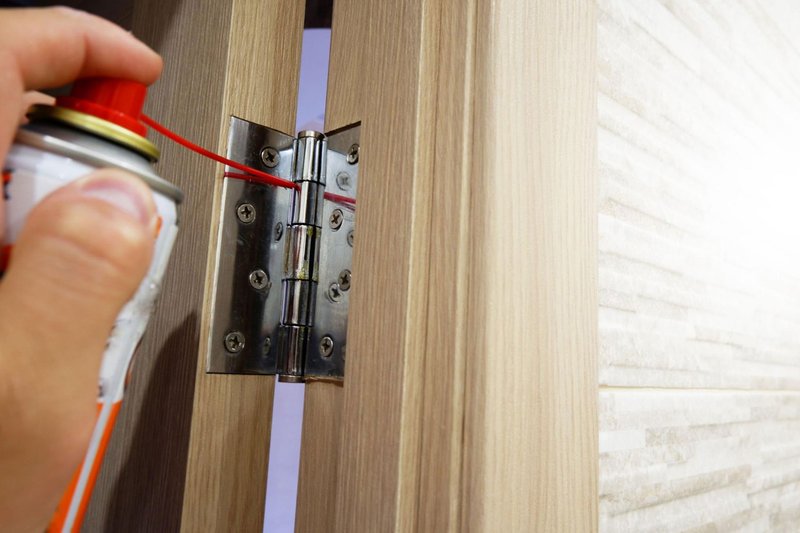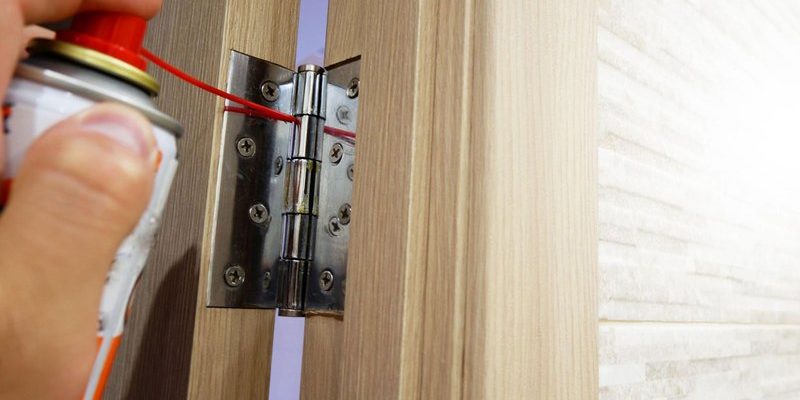
Here’s the thing: those little vibrations you probably never notice are working overtime. Think of your house like a guitar. Strum a chord (or slam the door a few times) and the whole thing shivers. Over time, those tiny, regular tremors can slowly work screws and bolts out of their snug spots. Whether you’ve installed a Schlage, Kwikset, or even a high-tech keypad lock, vibration doesn’t care about the brand. This sneaky culprit can work its way into homes both old and new.
What Causes Vibrations That Loosen Door Hardware?
So, what’s behind all this constant shaking? Believe it or not, your home is rarely at rest. Every time someone slams a door, stomps up the stairs, or even when heavy trucks rumble down the street, your house vibrates—sometimes just a little, sometimes enough to rattle a picture frame. And if you live in a busy area or a house with less insulation, those vibrations can be even stronger.
Most door hardware, like knobs and deadbolts, are held on by screws or bolts. These fasteners rely on friction to stay put, but with enough vibration, that friction gets chipped away until the hardware starts to wobble. It’s not just slamming doors, either. Wind blowing against your exterior doors, HVAC systems kicking on, or loud music can all contribute to the endless jiggling.
One less obvious source? The door itself moving in the frame. Older homes settle, and framing can subtly shift with the seasons. These movements aren’t always noticeable, but they add up—constantly nudging screws and bolts until they lose their grip.
How Vibration Loosens Door Hardware Over Time
You might be wondering how something as simple as vibration can actually undo a screw or bolt. Let me explain with a quick analogy: picture spinning a bottle cap back and forth. If you do that enough times, even with tiny movements, eventually the cap unscrews. That’s basically what’s happening with your door hardware—just at a microscopic level.
Each small vibration causes screws and bolts to turn just a fraction of a degree. It might not be enough to notice at first, but over weeks or months, those fractions add up. Hardware that isn’t perfectly tight or doesn’t use locking mechanisms makes things worse—there’s a little bit of play, so the parts can shift more with each movement.
Some brands, like Kwikset or Schlage, use extra features (like set screws or special washers) to try to combat this. But even the best designs can’t always overcome the physics of daily use and repeated vibration. And if your hardware wasn’t installed tightly to begin with, it’s even more likely to work itself loose over time.
Signs Your Door Hardware Is Suffering From Vibration Issues
If you’re not sure whether vibration is the culprit, there are a few classic symptoms to look out for:
- Loose handles or levers: If the handle jiggles or spins freely, something’s not right.
- Deadbolt won’t smoothly engage: A shifting lock might mean its screws or the strike plate are moving out of alignment.
- Visible screw heads or missing screws: Sometimes, you’ll spot screws backing out of the face of the hardware—or worse, falling out entirely.
- Unusual noises: Rattling, clicking, or creaking when you open or close the door can hint at loose parts.
Even electronic or smart locks, like those using Bluetooth or WiFi, aren’t immune. If you find yourself having to re-sync or reset your lock more often because it’s jostling in place, vibration might be to blame.
The Role of Installation and Maintenance
Honestly, a lot of door hardware vibration trouble starts with how the hardware was installed. If the installer didn’t torque the screws down properly, or if they skipped using lock washers, everything’s just waiting to come loose. Some people even use power tools to install door handles—which can strip screws or overtighten, breaking the grip before it ever sees a vibration.
Regular maintenance can help, but here’s the reality: most folks only pay attention when something’s already loose. That’s like only changing your car’s oil once it’s empty—not exactly ideal. Checking your door hardware every few months (say, during a seasonal cleaning blitz) can catch issues before they turn into a bigger headache.
If you live somewhere with frequent code updates (for things like door security standards), or you rely on modern remotes and smart tech for entry, keeping an eye on your hardware’s physical condition is just as important as software troubleshooting. A loose handle can make it harder to pair, sync, or even unlock your door reliably.
Ways to Prevent Door Hardware From Loosening
You can’t stop all vibration, but you can make your door hardware a lot more resilient. Here are a few proven strategies:
- Use thread-locking compounds: Products like Loctite act like glue for screws, keeping them tight even as things vibrate.
- Add lock washers: These create extra friction and prevent bolts from turning out of place.
- Check and tighten regularly: Set a calendar reminder to go around and check all your exterior doors every season.
- Don’t overtighten: Ironically, cranking screws down too hard can strip them, making it easier for them to slip out over time.
- Upgrade to better hardware: If you keep having trouble, it might be worth switching to a brand or type with anti-vibration features. Some modern locks are specifically designed to resist movement.
And for those who have electronic door hardware, whether you use a code, a remote, or an app to get in, remember: a loose install can cause all sorts of weird problems, from battery issues to needing frequent resets.
Comparing Universal Vs. Brand-Specific Door Hardware
You might be tempted to grab a “universal” exterior door handle or lock because it’s cheaper or claims to fit everything. But here’s what you should know: universal hardware can sometimes be more prone to loosening. Why? Because it’s designed to be flexible, not a perfect fit.
Brand-specific hardware—like a Kwikset lock for a Kwikset door—usually matches the exact shape and size of your existing holes. This tighter fit means fewer gaps and less slop, which equals less movement from vibrations. It can make syncing and pairing smart locks easier, too, since everything lines up.
That’s not to say universal products are always bad. If you’re renting or just need a quick fix, they can work in a pinch. But for a long-term solution where vibration is a problem, sticking with the original brand often leads to a more durable, trouble-free result.
Why This Matters For Security and Troubleshooting
Here’s the big picture: loose door hardware isn’t just annoying. It can actually put your home’s security at risk. A wobbly deadbolt or handle is easier for someone to force open. It can also mess with the battery life and performance of electronic locks, leading to more frequent troubleshooting—like having to reset, re-pair, or sync your device after it shifts out of place.
Plus, constantly tightening your hardware means wear and tear adds up faster. Eventually, screws and holes can strip out, leaving you with a bigger repair than you bargained for. It’s not just a cosmetic issue; it’s a foundational one.
If your door hardware is loose, don’t ignore it. Take the time to figure out why—whether it’s installation, vibration, or just the wrong type for your setup. Strong, well-installed hardware keeps your entry points safe, secure, and hassle-free.
When It’s Time to Call in a Pro
Sometimes, despite your best efforts, the hardware just won’t stay tight. Maybe your door frame is warped, the original holes are too big, or the lock itself is old and worn out. In these cases, a professional locksmith or handyman can help. They’ll know all the little tricks—like filling oversized holes, using the right lock washers, or upgrading to hardware that’s actually meant for your type of door.
If you’re dealing with a smart lock, calling in a technician who knows the code, reset routines, and how to pair devices properly is worth the investment. They’ll make sure your hardware is installed correctly and isn’t constantly vibrating loose (causing sync or battery headaches down the line).
Strong, secure exterior door hardware isn’t just about peace of mind—it’s about making daily life easier, one click or turn at a time.
So, the next time you notice your exterior door hardware loosening due to vibration, remember: you’re not alone, and you’re not powerless. With a bit of know-how—and maybe some upgraded screws—you can keep your door hardware tight, secure, and ready for whatever life (or your teenager’s slamming) throws at it.
